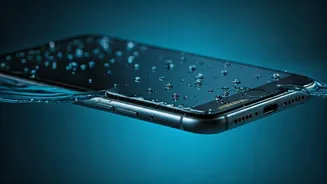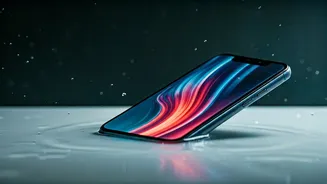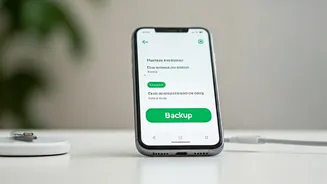Immediate Action Needed
The first moments after a phone meets water are critical. Every second counts, so speed is of the essence. Upon discovering your phone is wet, the primary
objective should be to remove it from the water immediately. Once extracted, turn it off straight away to prevent short circuits that can cause irreparable damage. Avoid pressing any buttons, as this can force water further into the device. Remove the SIM card and any external accessories, such as the case, to allow water to escape. These early steps greatly influence the phone's survival chances, so it's imperative to act quickly and cautiously.
Gentle Drying Techniques
Once you've acted fast to shut it down, the drying process begins. The goal is to get rid of any moisture. Use a soft, absorbent cloth to wipe down the phone's exterior. Focus on openings like the charging port, headphone jack, and any speaker grilles. Be gentle and patient; vigorous rubbing can force water deeper inside. After wiping, consider using a vacuum cleaner on a low setting near the openings to draw out water. Avoid using heat sources like a hairdryer, as heat can warp components and exacerbate water damage. The key is gentle drying, not forceful removal of moisture. This carefulness is what sets the stage for success.
The Rice Myth Debunked
Many people advise submerging a wet phone in a bowl of uncooked rice, but is it the best option? While rice can absorb some moisture, it's not the most efficient method. It can be a slow process, and the starch from the rice can actually get inside the phone, causing its own issues. A better choice is silica gel packets, which are highly absorbent and specifically designed to pull moisture from the environment. Place the phone and the packets in a sealed container for at least 24 hours, or even better, for a couple of days. The silica gel will work more effectively and minimize the risks associated with rice.
Patience Is Key
After drying, resist the urge to immediately power on the phone. This is a critical point; premature activation can cause short circuits that could destroy the phone. Wait for at least 24 to 48 hours to ensure all moisture has evaporated. If possible, wait longer; more time allows the phone's internal components to completely dry. Only after this drying period should you attempt to power it on. Observe carefully for any unusual behavior or error messages. If the phone turns on but has issues, such as distorted sounds or a malfunctioning screen, it might require professional repair. Patience during this process increases the odds of a successful recovery.
Assessing Damage and Repair
Once you turn on your phone, inspect it closely. Examine the screen, speakers, and charging port. If everything works well, congratulations! If there are issues, water damage may have occurred. Check the charging port for corrosion; if present, it can affect charging. Look for condensation under the screen, which suggests moisture is still trapped inside. Consider taking the phone to a professional repair service if you're not comfortable opening it. Professionals can assess internal damage, clean any corrosion, and potentially replace damaged components. A professional assessment can help prevent further damage and determine the best course of action.
Preventative Measures
After saving your phone, consider future precautions to reduce risks. Using waterproof cases or pouches can safeguard your phone in wet environments. Be cautious around water. Keep phones away from areas where water spills are likely. Think of installing a water-resistant coating on the phone for further security. Regularly back up your data to the cloud or a computer. This way, if your phone is damaged beyond repair, you won't lose your photos, contacts, and other important information. Proactive measures can prevent future problems and protect your investment. Taking these simple steps will help protect your device and your data.











